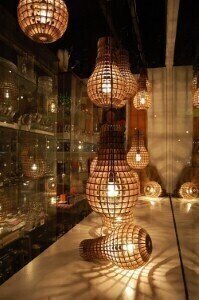Bioanalytical
Team of researchers get switched on by light development
May 09 2012
A team of researchers has successfully boosted fluorescence efficiency of nanocrystals which could lead to a new form of light bulb.
The traditional incandescent light bulb is rapidly falling out of use, with new methods being developed constantly to replace the tired form of lighting. Using white-light quantum dots is one such way that has been proposed by researchers, whereby ultra-small fluorescent beads of cadmium selenide convert the blue light produced by an LED into a warm white light with a spectrum similar to that of incandescent light.
These white-light quantum dots were discovered accidently by researchers in a Vanderbilt chemistry lab, however, most experts believed that it would be impossible to bring this technology to a practical level.
New research from the University has counteracted these assumptions, after a team of researchers successfully boosted luorescence efficiency of nanocrystals. Their results have shown that the efficiency has been improved from an initial level of three per cent to as high as 45 per cent, which gives it the potential for use in commercial applications.
Sandra Rosenthal, the Jack and Pamela Egan Chair of Chemistry, who directed the research which is described online in the Journal of the American Chemical Society said: "Forty-five per cent is as high as the efficiency of some commercial phosphors which suggests that white-light quantum dots can now be used in some special lighting applications.
"The fact that we have successfully boosted their efficiency by more than ten times also means that it should be possible to improve their efficiency even further."
After the discovery of quantum dots in 1980, researchers have been on the trial of making this into a viable lighting source ever since. Following from research conducted at the University of North Carolina, the researchers decided to see if treating the quantum dots with metal salts would have a brightening effect.
Following on from this, they explored acetic acid treatment which started to bump up the rates of efficiency. The then used formic acid, which is a member of the carbocyclic acid family, and found that it pushed the efficiency as high as 45 per cent.
Posted by Neil Clark
Digital Edition
Chromatography Today - Buyers' Guide 2022
October 2023
In This Edition Modern & Practical Applications - Accelerating ADC Development with Mass Spectrometry - Implementing High-Resolution Ion Mobility into Peptide Mapping Workflows Chromatogr...
View all digital editions
Events
May 05 2024 Seville, Spain
May 15 2024 Birmingham, UK
May 19 2024 Brno, Czech Republic
May 21 2024 Lagos, Nigeria
May 23 2024 Beijing, China














